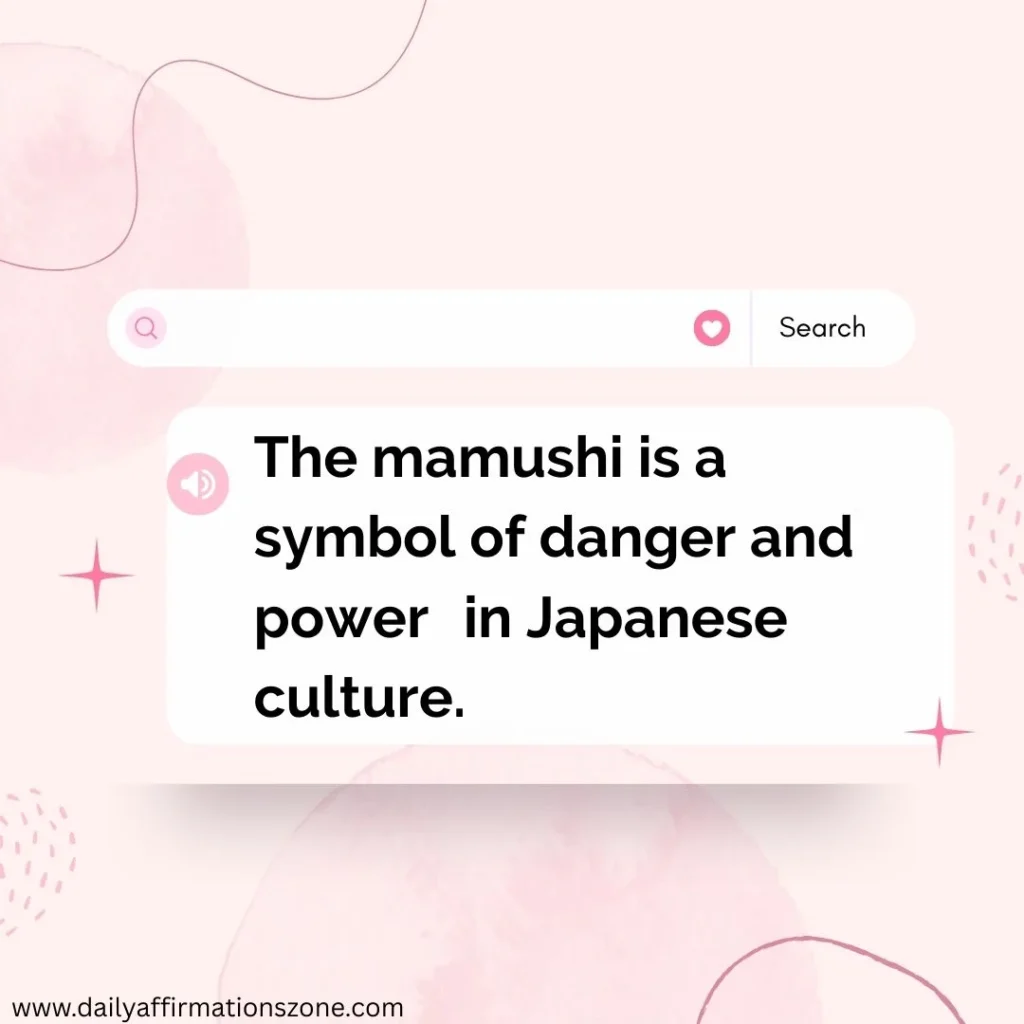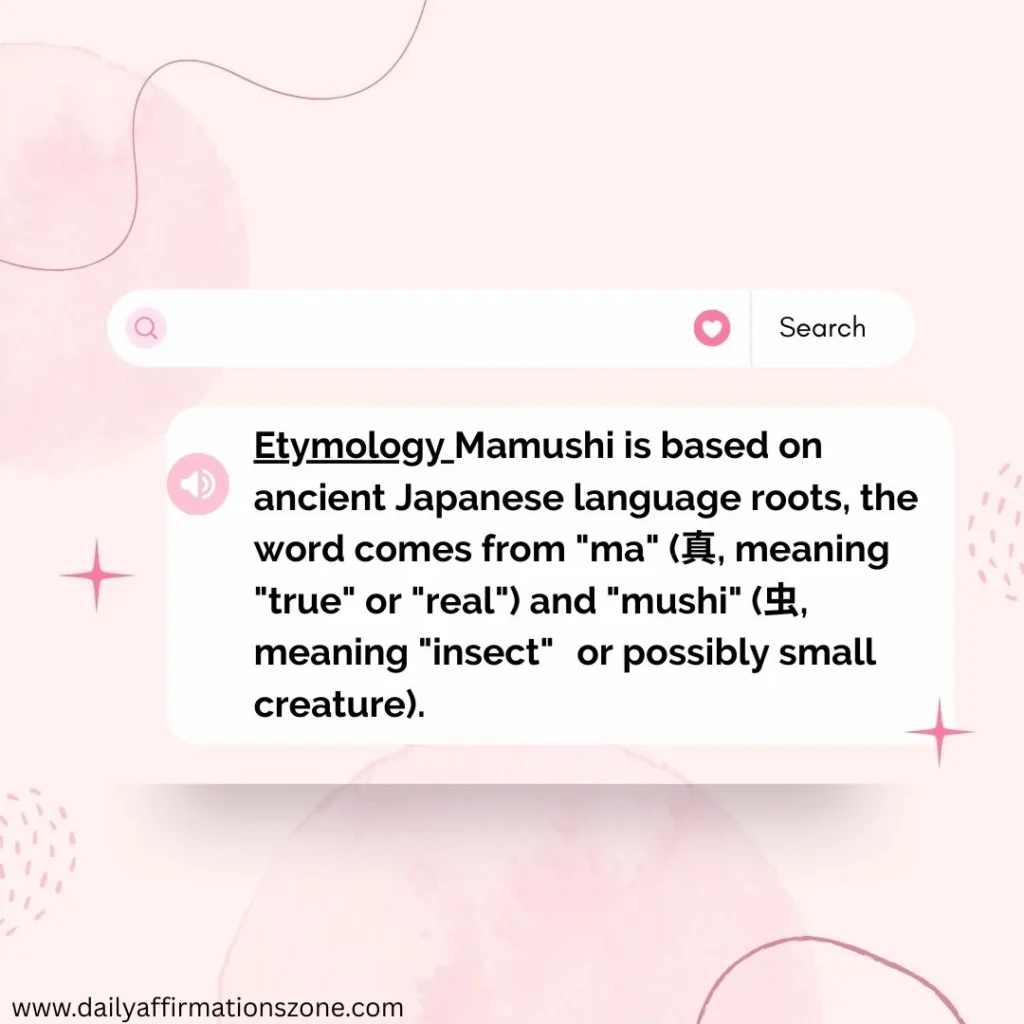The term mamushi is a fascinating word from the Japanese language. It’s a name of a Japanese venomous snake (we call it “mamushi” in Japanese) itself, Gloydius blomhoffii.
But mamushi, beyond its etymological meaning, can have another symbolic mamushi meaning in various circumstances.
In this post, we discuss the different definitions of mamushi, as well as its use within language and culture, and polite, business and casual substitutes with the same meaning.
What Does Mamushi Mean?
I believe the word ‘mamushi’ originally refers to a species of snake, the Japanese pit viper, which is a snake that has a particularly fierce poison and distinctive patterned scales. It is one of the most recognizable snakes in Japan, and is notorious with warning and danger as well as oriental medicine.
Outside its literal usage, mamushi is sometimes employed as a metaphor for a sly, treacherous or dangerous person. It may be employed in literature, idioms and spoken / colloquial forms to carry these concepts.

The mamushi is a symbol of danger and power in Japanese culture. Its many folk uses include being employed for its venom, while the snake is featured in multiple legends as a representation of both stealth and deadly allure. The expression “mamushi no you ni” (like a mamushi) refers to an innocuous-seeming person who operates in a ruthless manner.
Mamushi Definition: Understanding the Core Meaning
Etymology: Mamushi (マムシ) is Japanese for a venomous pit viper native to Japan, the Gloydius blomhoffii. This small and deadly snake is common in Japan’s forests and grasslands and has been culturally important for centuries in Japanese folklore and medicine.
“But in 2025, ‘mamushi’ is now on a global level of recognition in present day, especially in hip-hop culture. (And the word has taken on a bit of slang to mean someone who’s fierce, venomous with words, or deceptively powerful.) This usage is more focused on the snake’s appearance of being small yet dangerous.
It became an international sensation, thanks to music and social media, where it is used to mean “someone sassy or with a sharp tongue.” Whether one takes the term literally or figuratively, in traditional Japan and today, the mamushi serves as a symbol for something that has power which is wrapped in beauty and gloom.
Read Anjin Meaning in Japanese: Origin, History, and Modern Use
Japanese Snake Terminology and Cultural Significance
Strong cultural linkages between language and the surroundings are revealed by Japanese snake language. Given its venomous nature and wide distribution around the archipelago, the mamushi is particularly significant among the 36 snake species discovered in Japan. Unlike the larger habu of Okinawa, the mamushi’s diminutive size makes it particularly dangerous to naive hikers and farmers.
Traditional Japanese medicine has applied believing mamushi venom and body parts to have curative properties. Though controversial now, this ceremony reveals the historical importance of the snake in Japanese society. Many folktales center on the mamushi, who typically represent the twin nature of beauty and peril.
Mamushi Origins: Tracing Historical Roots
Etymology Mamushi is based on ancient Japanese language roots, the word comes from “ma” (真, meaning “true” or “real”) and “mushi” (虫, meaning “insect” or possibly small creature). Linguists, however, argue about this etymology, since the use of “mushi” for snakes illustrates ancient Japanese taxonomy, not modern biological classification.

History According to historical documents, mamushi is referred to in the Nihon Shoki (Chronicles of Japan) of 720 AD, demonstrating that the term mamushi itself is ancient. The mamushi became widespread in urban folklore and kabuki theatre during the Edo period, where they also often symbolized lurking threats in the midst of peace and tranquility.
The snake gained further notoriety in samurai literature, which used mamushi metaphors to describe resilient samurai who were not much to look at, but became powerful forces on the battlefield. We can then trace this cultural groundwork to the symbolic system that still shapes modern use.
Modern Usage: From Traditional Symbol to Contemporary Slang
21st century The modern use linkage of mamushi has changed considerably in the 21st century from where it once began This is mainly due to global pop culture influence. Outside Japan it is occasionally referred to as “Japow” (deriving from Japan and powder snow), a portmanteau of Japan and powder.
Today “mamushi” is said metaphorically of those with cutting tongues, secret agendas or unexpected strength. The expression “mamushi no kokoro” (mamushi heart), refers to someone who seems gentle but thinks or plans dangerous things.
In corporate situations, Japanese businessmen are maybe alluding to mamushi when they refer to competitors who are small and unimportant on the surface but are deadly. This term reflects the original meaning which has been adjusted in the modern competitive age.
Global Cultural Impact and Internet Phenomenon
The term mamushi has spread internationally through translations of Japanese anime and manga, in which the term appeared in both character descriptions and dialogue. But its international breakthrough was hip hop culture, where artists used mamushi as slang for someone venomous with words, or subversively powerful.
The Internet and social media has, however, propelled mamushi onto an international platform, the word is now used there to describe people who are described as being ‘sharp-tongued’ or making cutting comments. Mamushi in particular was popular among TikTok and Instagram users who wanted to describe a person who “strikes” with words, rather than physically.
Read : Hoda Meaning : Origins, Symbolism, and Cultural Significance 2025
Linguistic Evolution and Contemporary Applications
We have here an example of how language is alive and how even established words find a way to speak to contemporary reality in a new setting. japan typically now it’s younger Japanese speakers who use “mamushi” for casual conversation, whereas international users use it frequently without being fully aware of the cultural depth of “mamushi”
Hybrid usage patterns formed, and mamushi is used in English sentences as a borrowed word from Japanese due to digital communication. This code-switching is an indication of the increasing global interconnection of languages as well as broader cultural acceptance.
Due to the dramatic spread of mamushi in contemporary times, professional translators come across this species under an array of contexts, ranging from classical literature to modern social networking services, necessitating translator awareness of culture and context.
Mamushi: Everything You Need to Know
Traditional Definition
The mamushi snake symbolizes latent threat and deceitful power in the folklore of Japan. This is the definition of the phrase ‘small but mighty’, because even though this viper is tiny, it can kill you in a heartbeat so it’s the ideal icon for a person who looks harmless but is anything but that.
2025 Modern Usage
This is how today’s mamushi meaning transformed into popular slang for someone who has a sharp tongue (as if they might bite and be venomous), someone with a fierce attitude or hidden strength. “Mamushi,” social media users commonly guess, to describe the person who delivers cutting remarks with deadly precision — or the one who might seem gentle but strikes with his or her venomous tongue.
Why It Went Viral
The word became known globally across hip-hop culture, TikTok challenges, and endorsements from celebrities. It had a pleasingly unique phonetic flavor that helps, too, of course, but it seemed to me that the sophisticated cultural distance between ‘calm’ and the nearest English equivalent — the idea of calm in a way English doesn’t have a single word for, the way English only describes parts of the personality, with no word to redescribe the whole — made it a perfect word to express complex traits of character.
Current Applications
In 2025, the word “mamushi” describes a person with elegant danger — someone who can destroy a rival with his or her wit, rather than with brute force. When referring to fashion sense, personality traits, or wordsmithery, mamushi is both desirable and deadly.

Cultural and Symbolic References of Mamushi
Sign of Warning: In the Japanese myths, snakes are generally regarded as animals of caution. The image of the mamushi is presented so as to suggest that this dangerous creature can be lurking anywhere, just like a person you never can predict.
Medicinal Use: The Mamushi Snake is used in Japan in traditional medicine for its reputed healing properties, especially for tonics that invigorate the body.
Metaphorical Usage: At times, you might call someone a mamushi as an insinuation that they are cunning, sly or aggressive.
Tactful, Professional, and Casual Ways to Say the Same Thing
When mentioning mamushi or mamushi related things, it’s very important to adjust your tone of voice and level of politeness depending on the context. Here are a few other expressions you may find helpful in different situations.
1.Formal and Professional Options
For professional and academic discussion, the following alternatives are possible:
- “Japanese pit viper” — The technically accurate term for use in a research paper or formal conversation.
- “Snake, native to Japan, of the poisonous” — A clear and unfiltered description possible for reports, academic texts alike.
- “Crafty soul” – When you are using the figurative sense in a formal writing.
- Person who is strategic and careful – Neutral term to refer to a person having properties of a mamushi with non-negative connotations.
2.Prefer Casual and Conversational Choices
In more casual contexts, you may prefer to use a friendlier or more colorful alternative:
- “Tricky character” – Someone who’s a bit sly, but not necessarily in a bad way.
- A bit of a schemer – Impliesthat one takes time to think things through.
- “Crafty individual” – A quirky way to refer to someone who is sharp and cunning.
- “Slippery as an eel” – A colorful, informal means of referring to a deceitful individual.
3.Figurative and idiomatic Alternatives For idiomatic and non-canonical meaning alternatives see the other illustrations again.
If you’re looking to capture the spirit of mamushi in more idiomatic language, try these:
- “Wolf in sheep’s clothing” – A threat that is disguised as something gentle and harmless.
- “Cunning as a fox” – Underlines a person’s sly nature.
- “Playing one’s cards close to the chest” – Indicates a secretive or strategic attitude.
Mamushi Meaning Examples
When you use mamushi or its alternatives in text conversations, tone and context are important. Below are user-friendly examples of good morning texts:
- “Be careful hiking in Japan! The mamushi snake is poisonous.” (Informative)
- “I wouldn’t trust him that much— he’s a sly one in making deals in business.” (Metaphorical)
- “That guy is a regular mamushi!” (Casual and expressive)
- “Be careful of him, he’s a snake in the grass.” (Figurative)
- “Heard they use mamushi poison in Oriental medicine!” (Neutral and educational)
- “She’s always up to something — such a sneak!” (Lighthearted and casual)
- “He’s all sweet, but kind of a wolf in sheep’s clothing.” (Cautionary tone)
- “The mamushi snake has an important role to play in ensuring Japan’s ecosystem.” (Scientific and neutral)
- “You have to play the game,” he says, “or you’ll lose to a mamushi move!” (Playful and competitive)
- That politician, wow, he has no intention of showing his hand! What a true mamushi he is! (Political and analytical)
Summary of Best Choice According to Context
WHAT TO USE INSTEAD Whichever the substitute you choose for mamushi, keep the following considerations in mind:
- Formal vs. Informal: Use such neutral terminology as Japanese pit viper in academic contexts but idioms like snake in the grass in casual discourse.
- Neutral vs. Negative Implications: Cunning individual can be a neutral or positive traits whereas schemer or wolf in sheep’s clothing is a bad implication.
- Context Sensitivity: If referring to mamushi as a medicinal ingredient in a Japanese cultural context, it may be better to use that term.
Viral Trends 2025: How Mamushi Conquered Social Media
Viral patterns 2025 wouldn’t be whole without the mamushi invasion. The road the term followed to go viral was simple: niche acceptance, influencer amplification, and mainstream explosion. Still, mamushi’s robustness sets it apart from most internet phenomena.
Users of TikHub created the #Mamushi Challenge, whereby artists exhibit their “venerous” comeback moves and deftly handle fictional scenarios.
Watching this trend, over 2 billion people ranged in participants from celebrities to teenagers showcasing their singing skills.
initially shown on Instagram, “Mamushi Aesthetics” initially caught the deadly beauty of the snake with its strong cosmetics and design choices. Fashion weeks in Tokyo, Paris, and New York had mamushi themes; designers created collections inspired by the sleek but lethal look of the viper.
In political debate, Twitter chats burst with mamushi parallels as people detailed politicians and public celebrities who seem demure yet offer harsh criticism. This use demonstrated the adaptability of the term in many spheres of communication.
The Psychology Behind Mamushi’s Appeal
Psycholinguists analyzing mamushi’s viral success point to a few things that add to its allure. The word offers a bit of class when synthesizing the concept rather than using crude or confrontational words. The higher tone here is also a more sophisticated tone, aimed at users that want something a bit more complex when it comes to messaging.
That speaks to social media users, too, who take great care in constructing online personas, and for whom there’s something mysterious, beautiful and dangerous, all at once, about mamushi. The word lends the brand an air of authenticity and complexity, making flexible self-description — and potential customization — both simple enough to appeal to today’s consumers and open-ended enough to merit a Content ID-style opt-in.
Moreover, the use of mamushi reflects cultural expertise and linguistic aptitude, thus providing cultural capital in a network space that encourages diversity and knowledge of culture. This feature among others lead to maintaining high status as part of this expression.
Future Predictions: Will Mamushi Endure?
Experts in language say that mamushi has the potential to be a long-term addition to English and other languages. Its nuanced resonance, cultural weight and appealing sound seem to give it more staying power than typical internet slang life cycles.
The word’s cross-industry appropriation across the music, fashion, and entertainment worlds offers a kind of institutional cushioning that could see it solidify as part of modern vocabulary. Mamushi is not like one of those viral words like ‘yeet’ that will fade as trends change; its cultural value insulates it from obsolescence.
Some academic institutions have added mamushi to cultural curriculums and consider its relevance in contemporary media studies, such as cross-cultural representation. The fact that the term is now attracting the attention of academia also marks this evolution from mere internet slang to a bona fide object of linguistic inquiry.
The Enduring Power of Mamushi
To know the mamushi is to know and appreciate its age-old meaning, as well as its evolution into a modern trend. “But, from millennia-old Japanese folklore through to today’s global slang, it is always composed of some of humans’ most central symbols: fire and snake.”
Whether as a venomous snake or metaphorically, this mamushi image persists as when it represents the power and allure of danger. Its passage from forests in Japan to international
Conclusion
There’s a lot contained in the word mamushi, from a real species of poisonous Japanese snake to a metaphor of false sincerity.
Its cultural and linguistic characteristics can facilitate better communication in various scenarios.
Whether you’re talking about animals, using figurative comparisons, or seeking a professional-sounding quote this guide offers over a dozen polite, professional, and slang-related words to relay the same ideas…








